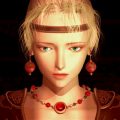Cognition Dissemination: Tokyo RPG Factory Takes Their Name Too Literally

Square Enix posted profitable results for their last fiscal first quarter thanks to successful titles like Final Fantasy VII Remake, Dragon Quest Walk, and War of the Visions: Final Fantasy Brave Exvius, along with the continued success of Final Fantasy XIV. But it wasn’t all rosy; they also lost money thanks to two subsidiaries.
The loss on Studio Istolia was no surprise. The project they were working on, Project Prelude Rune, was cancelled following its only showcase in 2018, which resulted in the departure of producer (and former Tales of franchise head) Hideo Baba and the studio’s shuttering. All the money spent on staffing them up to have them work on the title for over a year was largely for naught.
More surprising was the loss they took on Tokyo RPG Factory, but this was inevitable given how they were going. There was plenty of promise for them when the announcement of their establishment was made in 2015, a subsidiary that would focus on making classic-style Japanese RPGs that pay homage to titles older (or just plain old) people remember from the 1990s. Their first game, I Am Setsuna, invoked Chrono Trigger, though with predominantly snowy and icy environments. At the time, there were already a number of developers making games inspired by older RPGs, of varying quality. The appeal here would involve RPG fans seeing these games from a portion of the company (Squaresoft, before they became Square Enix) responsible for those older games.

Reality has not lived up to the promise. I Am Setsuna wasn’t comparable to the better 1990s JRPGs, with a lack of variety in its environments (which they were upfront about, admittedly) and the music, along with inadequate gameplay and writing. If you make a game that channels Chrono Trigger, you’d better damn well come close to measuring up. It was always doomed with that comparison, but iffy early results aren’t a death kneel for a new developer staffed with younger talent. It was taken as an amicable-enough first attempt for a team that could eventually move on to quality products — could.
This did not happen with Lost Sphear, their second RPG, which ended up being less impressive than Setsuna in nearly every way outside the color palette and, to a lesser extent, the soundtrack. They made an attempt to shake up the formula with Oninaki by making an action RPG that took inspiration from Squaresoft titles in the genre from the late 90s. The demo was impressive enough, but the game itself yet again failed to realize the early promise. TRF’s games include familiar tropes and gameplay elements from older JRPGs, but without the charm, soul, and especially the quality. Basically, they’re churning them out like some kind of factory, taking their name too literally for comfort.
These games target an extremely online audience that remembers classic games from the mid-to-late 1990s fondly, so it never took long for word to spread about their quality, specifically the lack thereof. They’ve been largely digital-only titles outside Japan and Asian countries, meaning there’s no way to tell precisely how they’ve sold. But Square Enix’s losses suggest that sales have been uninspiring in every major territory.

One significant impediment towards Tokyo RPG Factory’s success is how there’s already a team at Square Enix doing what they do better: Asano Team, led by producer Tomoya Asano. They spearheaded the Bravely Default games, turn-based RPGs with aesthetics, exploration, and gameplay styles that served as homages to the older Final Fantasy games, though their gameplay wasn’t identical to them. They also spearheaded Octopath Traveler, which takes inspiration from both Final Fantasy and the SaGa series with a graphics style that combines sprites with 3D backdrops. Their games aren’t universally liked, but they were received better than TRF’s games in terms of sales and critical reception.
TRF has three strikes against him, but I hope Square Enix doesn’t believe they’ve struck out. We’ve already seen too many layoffs lately due to the COVID-19 pandemic, though some employers are using that as an excuse to downsize. I’d like to see them get at least one more shot at making a game that more successfully captures the spirit and quality of classic JRPGs, a title that will ideally be good enough to start a competition series with Team Asano. If their next title also ranges between “mediocre” and “merely okay” in terms of quality, to be the fourth in a row, it will be tough to defend giving them further chances.
These financial results mean Tokyo RPG Factory is on thin ice with Square Enix, so their next game will have to be their best yet. It’s been just over a year since their last game, Oninaki, released, which means they should be knee deep in the development of their fourth title. It will ideally be a good one, but they should expect plenty of skepticism before anyone gives it a shot thanks to their pedigree.





